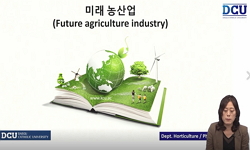Studying the relationships between processing conditions, fat crystallization, and properties of food products enables deeper understanding and improved control of desirable and undesirable product attributes. The first part of this project was to ...
http://chineseinput.net/에서 pinyin(병음)방식으로 중국어를 변환할 수 있습니다.
변환된 중국어를 복사하여 사용하시면 됩니다.
- 中文 을 입력하시려면 zhongwen을 입력하시고 space를누르시면됩니다.
- 北京 을 입력하시려면 beijing을 입력하시고 space를 누르시면 됩니다.
https://www.riss.kr/link?id=T12725466
- 저자
-
발행사항
[S.l.]: The University of Wisconsin - Madison 2011
-
학위수여대학
The University of Wisconsin - Madison
-
수여연도
2011
-
작성언어
영어
- 주제어
-
학위
Ph.D.
-
페이지수
201 p.
-
지도교수/심사위원
Adviser: Richard W. Hartel.
-
0
상세조회 -
0
다운로드
부가정보
다국어 초록 (Multilingual Abstract)
The first part of this project was to evaluate the effect of slow cooling rates from 0.05 to 0.5°C/min on anhydrous milk fat (AMP) crystallization. An increase in cooling rate from caused an increase in the solid fat content (SFC) and a decrease in the final melting temperature. Slower cooling resulted in formation of larger crystals, whereas faster cooling led to formation of relatively small crystals. The increase in SFC and smaller crystals led to increases in both storage and loss moduli increased as the cooling rate increased from 0.05 to 0.5°C/min generating firmer products.
In the second part, crystal partitioning at an oil-water interface was studied as a function of interfacial properties and crystallization rate. The partitioning of crystals was governed competitively by both interfacial properties and the rate of crystallization. Decreasing the interfacial tension between the oil and surfactant solution phase and the contact angle between the oil-crystal-surfactant solution three-phase interface increased the tendency of oil to dewet fat crystals. An increase in crystallization rate increased the instantaneous SFC, causing an increase in the tendency of crystals to be wetted by the oil phase. An empirical adhesion tension-crystallization rate diagram was constructed to predict the conditions under which crystal partitioning at an oil-water interface may occur.
The final part studied the mechanism of partial coalescence. Partial coalescence is thought to be caused by an extension of fat crystals through the oil-water interface of one fat droplet, which then penetrates an adjacent fat droplet and causes a clustering effect. In situ observation of emulsion by optical microscopy of droplets undergoing partial coalescence showed no evidence of fat crystal migration to the oil-water interface during partial coalescence. Instead, direct visual evidence of liquid oil initiating partial coalescence was observed. The results indicated that partitioning of crystals at an oil-water interface is not required for partial coalescence to occur. Partial coalescence may be caused by the nucleation of thermally activated holes during temperature cycling.
Studying the relationships between processing conditions, fat crystallization, and properties of food products enables deeper understanding and improved control of desirable and undesirable product attributes.
The first part of this project was to evaluate the effect of slow cooling rates from 0.05 to 0.5°C/min on anhydrous milk fat (AMP) crystallization. An increase in cooling rate from caused an increase in the solid fat content (SFC) and a decrease in the final melting temperature. Slower cooling resulted in formation of larger crystals, whereas faster cooling led to formation of relatively small crystals. The increase in SFC and smaller crystals led to increases in both storage and loss moduli increased as the cooling rate increased from 0.05 to 0.5°C/min generating firmer products.
In the second part, crystal partitioning at an oil-water interface was studied as a function of interfacial properties and crystallization rate. The partitioning of crystals was governed competitively by both interfacial properties and the rate of crystallization. Decreasing the interfacial tension between the oil and surfactant solution phase and the contact angle between the oil-crystal-surfactant solution three-phase interface increased the tendency of oil to dewet fat crystals. An increase in crystallization rate increased the instantaneous SFC, causing an increase in the tendency of crystals to be wetted by the oil phase. An empirical adhesion tension-crystallization rate diagram was constructed to predict the conditions under which crystal partitioning at an oil-water interface may occur.
The final part studied the mechanism of partial coalescence. Partial coalescence is thought to be caused by an extension of fat crystals through the oil-water interface of one fat droplet, which then penetrates an adjacent fat droplet and causes a clustering effect. In situ observation of emulsion by optical microscopy of droplets undergoing partial coalescence showed no evidence of fat crystal migration to the oil-water interface during partial coalescence. Instead, direct visual evidence of liquid oil initiating partial coalescence was observed. The results indicated that partitioning of crystals at an oil-water interface is not required for partial coalescence to occur. Partial coalescence may be caused by the nucleation of thermally activated holes during temperature cycling.











